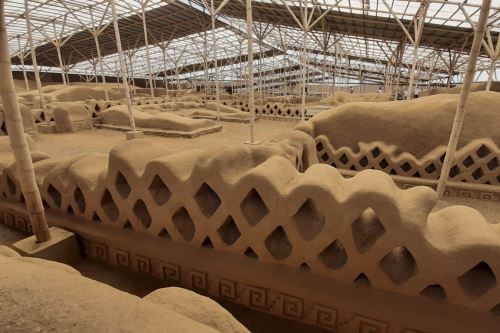Chimu Farming Site Uncovered in Peru
An important archaeological find has been made by researchers from San Marcos University (UNMSM) in the Chicama Valley, located in the La Libertad region.
A new archaeological landscape of the Chimu Culture —between 500 and 600 years old— has been discovered in this area.
San Marcos University reported that the archaeological site discovered in El Oso ravine, within the framework of the Chicama Archaeological Program, is believed to demonstrate the agricultural orientation of the Chimu Culture.

With this discovery, previous research and the San Marcos team suggest that the site was mainly used for agricultural production purposes, which is inferred because the channel that connects the Chicama River waters and various areas of the Moche Valley flows very close to the settlement.
According to Henry Tantalean, the archaeologist leading the San Marcos team, the site belongs to the Chimu period and comprises three buildings that are very similar to one another, albeit on a smaller scale than the Chan Chan citadel.
In addition, he explained that it has around 40 hectares of cultivated fields that used to be irrigated using an ancient technique involving a series of channels.
For her part, archaeologist Carito Tavera affirmed that the importance of this discovery and the interest in continuing the works at the site is because this demonstrates the long tradition of the Chicama Valley to allocate spaces for cultivation and large-scale agricultural production for the sustainability of people in this area of northern Peru.
In this way, the establishment of a settlement in this place shows that the Chimu people were interested in managing the area of the valley and did great construction works to expand their agricultural frontiers, something that they are doing even nowadays.
During the excavation process, after removing large rocks, archaeologists found traces of what was a great wall —at least two meters high— that surrounded the site, as well as a fairly preserved and compacted floor covered with sand that the wind brings.





